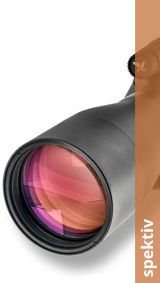For technical reasons, the image sharpness of binoculars decreases from the centre of the image to the edge (due to the shape of the lens). As a rule, it can be assumed that the higher the quality standard of the binoculars, the better the edge sharpness and the smaller the drop in sharpness. If the field of view is generously specified for inexpensive [...]
Maximum optical performance thanks to optical coating of lenses and prisms When light hits a glass-air surface (e.g. with a roof prism), the reflection causes a loss of light. This results in a loss of image brightness, contrast and colour brilliance. This reflection can be reduced by coating the surface of lenses and prisms in binoculars or riflescopes with a thin layer of metal salts. Thanks to [...]
Fernglas Gummiarmierung für besseren Halt und als zusätzlicher Schutz Ein zusätzlicher Schutz des Fernglases bei rauen Bedingungen, wird durch das Aufbringen einer widerstandsfähigen Gummiarmierung auf dem Fernglasgehäuse erreicht. Neben dem besserem Schutz gegen Stoß und Schlag wird dadurch zudem ein sicheres Halten des Fernglases bei nassem oder kaltem Wetter geboten. Auszug Ferngläser mit Gummiarmierung im Optik Shop Meinem Wunschzettel [...]
Nitrogen filling for sealing optical devices such as binoculars and optical sights Temperature fluctuations can cause moisture to enter the housing of binoculars and cause the inner glass surfaces to fog up. Filling with dry nitrogen (nitrogen filling) reduces the moisture content during assembly and thus prevents the inside of the lenses from fogging up later. High-quality binoculars are completely sealed airtight after [...]
Difference and comparison between porro prisms and roof prisms The design of binoculars is always determined by the type of prism used. Difference between prism systems left: Roof prism, right: Porro Porro prism Binoculars with the Porro prism design can be recognised by their relatively low height and wide design. Advantage: The greater distance between the two lenses promotes spatial vision. A graphical representation and [...]
Increased optical performance through aspherical lenses The use of aspherical (non-spherical) lenses increases optical performance, especially at the edges. By changing the curvature towards the edge of the lens, light rays reaching the edge of the lens are also precisely deflected, resulting in a significantly sharper, high-contrast and detailed image across the entire field of view. Main advantage of aspherical lenses Through [...]
What spectacle wearers need to consider when buying binoculars! Half of the European population wear glasses either temporarily or permanently. Looking through binoculars with glasses reduces the field of vision by 50-60%. An eyepiece with dioptre compensation offers a remedy for short-sightedness or long-sightedness. If you wear glasses, you should therefore make sure when buying binoculars that these [...]
Dioptre correction for spectacle wearers with different visual acuity The dioptre correction on the eyepiece is used to compensate for differences in visual acuity between the eyes. Dioptre adjustment for binoculars Many people have differences in the visual acuity of both eyes. For this reason, binoculars with two identical eyepieces with adjustment options are used to achieve a uniformly sharp image of the object (the differences between the two eyes [...]).
The function of dark adaptation and light adaptation of light or on the retina in the eye The retina of our eyes has two different types of sensory cells or receptors, on the one hand the cones (for day vision) and on the other hand the rods (for night vision). All photoreceptors are stimulated by the amount and spectrum of radiation. The cones are more sensitive to light [...]
Binoculars with adjustable eyecups - ideal for spectacle wearers For spectacle wearers, all DDoptics binoculars are equipped with retractable eyecups. This makes observation easier and enlarges the field of view. We have fitted your binoculars with retractable eyecups to ensure the optimum eye distance to your binoculars even when wearing glasses. The eyecups can be extended or retracted by simply turning the [...]
How eyepieces work in optical devices - binoculars and optical sights The eyepiece is the lens group of an optical device that faces the eye. The eyepieces consist of several separate lenses - achromats (3-6 individual lenses). The task of the eyepiece is to magnify the image produced by the objective or erected by the prisms. If the lens is correctly focussed, the [...]
Adjustment is the precise fine tuning between the mechanics and optics Adjustment in binoculars refers to the parallel alignment of the two halves of the binoculars. If binoculars are knocked hard or fall to the ground, for example, the prisms are displaced and the binoculars are misaligned. Consequence of misalignment in binoculars When observing through a misaligned binocular model, the observer [...]


















